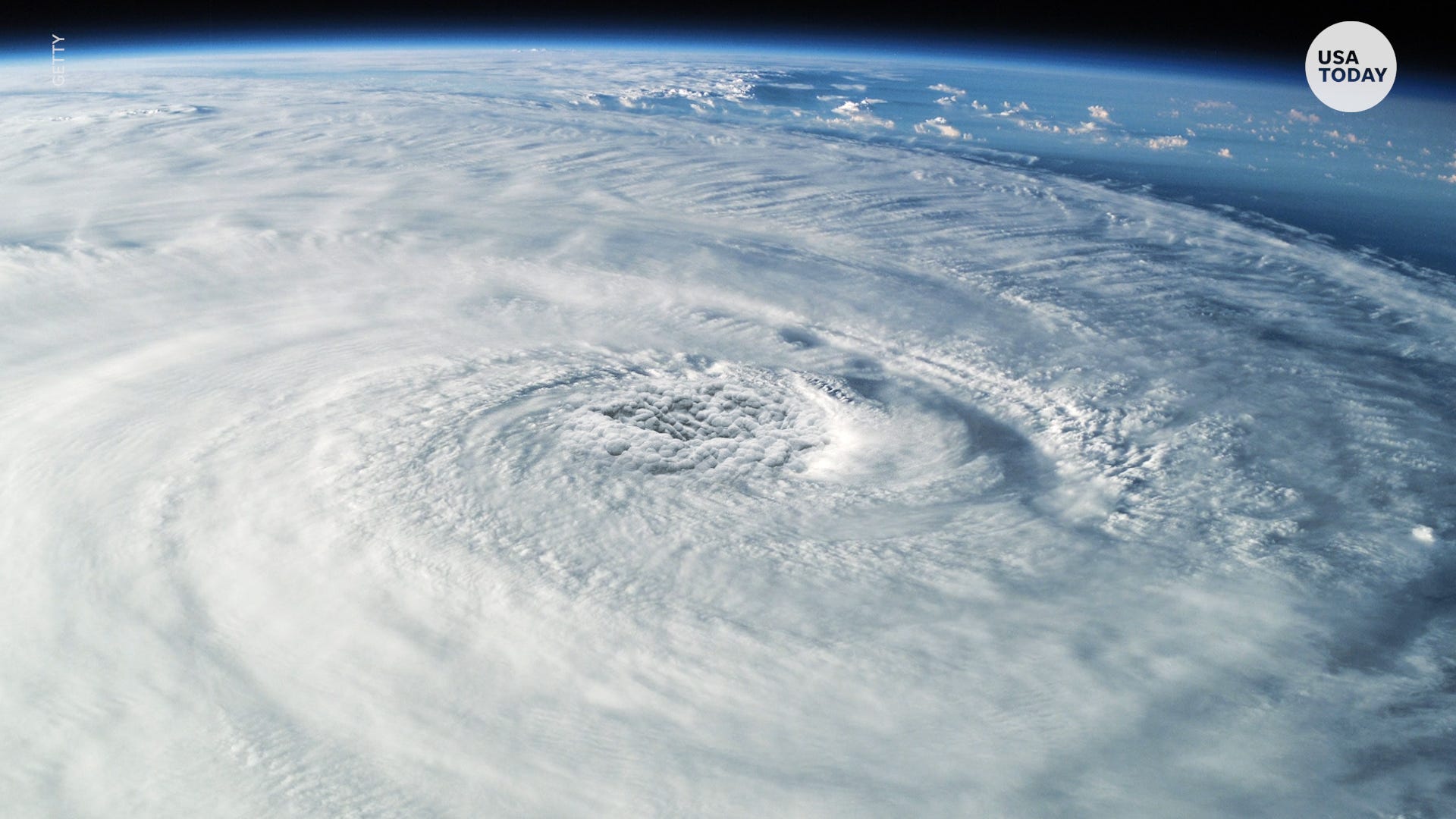
National Hurricane Center is nearly out of storm names, so now what?
This year's Atlantic hurricane season has been so active, forecasters are almost out of names so now they will be moving on to the Greek alphabet.
In early 2005, officials across Florida gathered for the state’s annual hurricane conference, still weary and worn out from a disastrous 2004 hurricane season.
The state’s then-health department director, John Agwunobi, urged the group in a keynote session not to be complacent. In a prescient statement, he warned: Just because four hurricanes struck Florida in 2004 didn’t mean five couldn’t strike in 2005.
Phil Klotzbach, a meteorologist at Colorado State University who makes seasonal hurricane forecasts based on climate variables such as ocean temperature and wind currents, remembers that quote – and the season that followed.
By the end of 2005, many new records had been set. For the first time in history, the National Hurricane Center turned to Greek alphabet names after running through the list of storm names for the season. And, five hurricanes struck Florida.
One of those was Katrina, which went on to devastate a swath of the northern Gulf Coast from New Orleans to Bay St. Louis, Mississippi, making landfall twice on Aug. 29, 2005. It became the fourth deadliest hurricane on record, claiming 1,833 lives and displacing hundreds of thousands of people.
One hurricane after another set new records for low barometric pressure, until finally in October, Wilma’s central pressure dropped to 882 mb. (The lower the pressure, the stronger the storm.)
That low pressure record still stands today. The 2005 season finally wound to a close with Hurricane Epsilon, only the sixth December hurricane in history. The season that caused more than $124 billion in losses was one many hoped never to repeat.
Fifteen years later, to some it seems like déjà vu.
Fifteen years ago this weekend, hurricane researcher Mark Sudduth, owner of HurricaneTrack.com, was on his way to Texas for Category 5 Rita. On Sunday, he was on the coast of Texas documenting Beta's early storm surge flooding.
"We saw this coming in April, with the signals of a very warm Atlantic and the La Nina," Sudduth said. "When Beta makes landfall it will tie or set the record for the most tropical cyclones to hit the U.S. in a single season. That's just crazy."
Given 23 named storms have formed already, Klotzbach said the chances are good that 2020 will surpass 2005 for named storms but not for hurricanes and major hurricanes.
After Teddy and Beta, the rest of September looks "pretty quiet," Klotzbach said. October, however, "looks favorable" for more storms.
The latest: Tropical Storm Beta expected to bring flooding rain to Texas coast by Monday
The big difference so far between the two seasons, Sudduth said, is "we haven't had the very long lasting, powerful hurricanes like we did in '05."
In that regard, Klotzbach said it's unlikely 2020 will catch up to 2005.
In terms of the intensity and duration of the strongest storms, 2020 is unlikely to equal 2005, Klotzbach said. By the end of 2005, the accumulated cyclone energy -- measured by the intensity and duration of all the storms combined -- was 250, he said. Right now the Atlantic's accumulated energy is around 90.
"I think it’s highly questionable we get five more major hurricanes this year to equal 2005," Klotzbach said.
This year will be "hard pressed to approach 2005," he said. "Of course, it is 2020, so I can’t rule out anything!"
Sudduth ageed. "We still have a ways to go," he said. "You never know."
Dual disasters: How is climate change worsening wildfires and hurricanes?
What was the 2005 hurricane season like?
Here’s a look at the 2005 season, from a seasonal summary by NOAA’s National Centers for Environmental Information:
27 – Named storms, the most in a single season, breaking a record 21 in 1933. As of Saturday, this 2020 season has produced 23 named storms, including two using the Greek alphabet for only the second time in history.
14 – Hurricanes formed, the most in a single season, breaking a record set in 1969. Only eight hurricanes have formed so far in 2020.
8 – Major hurricanes with winds of 111 mph or more, storms that were Category 3 or higher on the Saffir-Simpson wind scale. Two hurricanes reached that level of intensity this year so far, Laura and Teddy.
7 – Storms that made landfall in the U.S: Arlene, Cindy, Dennis, Katrina, Rita, Tammy and Wilma. Only the hurricane seasons of 2004 and 1916 saw more landfalling storms, with eight each. If Beta makes a landfall as forecast in Texas this week, it will be the ninth storm to make landfall in the continental United States this year, tying the 1916 record, Klotzbach tweeted on Saturday.
6 – Greek names used for tropical storms that season: Tropical Storm Alpha, Hurricane Beta, Tropical Storm Gamma, Tropical Storm Delta and Hurricane Epsilon.
3 – Category 5 hurricanes: Katrina, Rita and Wilma. In terms of overall hurricane intensity, the 2020 season has been much lower than 2005.
1 – Storm discovered in the after-season analysis.
tinyurlis.gdclck.ruulvis.netshrtco.de
مقالات مشابه
- گوش دادن به قسمت 23 'در آبی کرسی": جام استنلی زاری feat. میله گیلبرت بری بک
- عجله طلای پرو جنگل های بارانی بکر را به غرق های جیوه بسیار آلوده تبدیل می کند
- خرید لوازم خانگی - دومینوکالا
- جوان اریک Lindros نمی خواهد که مطمئن رنجرز استنلی فنجان
- چه رفت در فلوریدا COVID-19 پاسخ ؟ زمان تست گردشگری و سیگنال مخلوط
- محلی تیم بسکتبال کالج آماده به عقب بر گردیم در دادگاه
- «and We Won't Take It Anymore!
- سئو چیست؟
- عمه Jemima به نام تجاری خود را تغییر نام و حذف اسم, سیاه, شخصیت
- نیاز به دانستن: مدیر صندوق که خال خال اقامت در خانه روند دو سال پیش است چشم خود را بر روی این سهام در حال حاضر